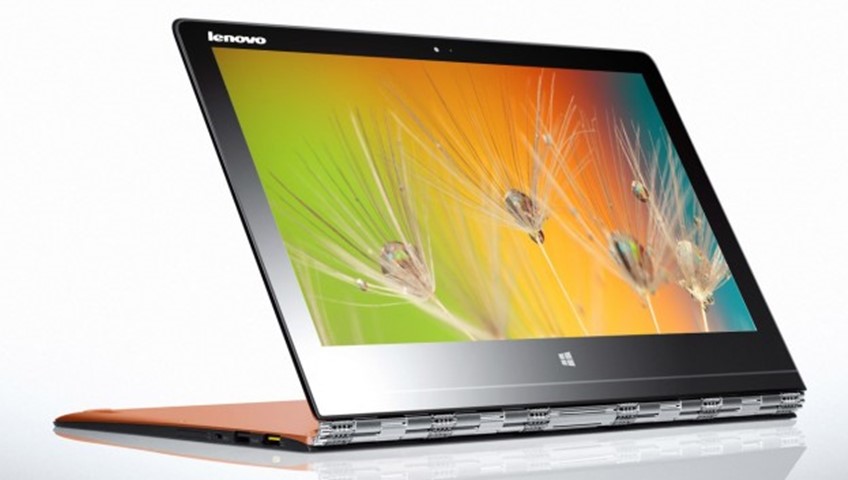
The first Core M laptop paints a depressing, mediocre picture for Intel’s Broadwell
The delays have raised investor questions about Intel’s ability to maintain or leverage a technological advantage over its rivals, and while Intel’s own demos have looked amazing, these always take place on very friendly turf under controlled conditions. There’s no substitute for shipping hardware, and that’s why a great many eyes have turned to Lenovo’s Yoga 3 Pro — the first shipping device with Broadwell inside. Somewhat unfortunately, this critical first system doesn’t seem to live up to Intel’s hype.
While many reviewers praise its diminutive size, low weight, and display quality, complaints about battery life, heavy throttling, and poor performance are common. Curiously, reviewers are completely split on whether or not the system even has a fan. Some reputable outlets make specific note that the computer lacks one, while others complain about the sound level. What everyone agrees on is that the system throttles constantly, possibly in part because Lenovo chose to set a 3.5W target for the chip rather than the 4.5W TDP that Intel specifies (the Yoga 3 Pro allows for bursts of up to 12W total system consumption, however).
Lenovo’s claim of “up to nine hours” on battery life is farcical. WindowsCentral.com claims 5-6 hours, at the very most. PC Pro hit eight hours, but only by turning screen brightness to its lowest levels; turn brightness up and battery life plummets. UltraBookReview reports that under various workloads battery life ranges from 6 hours to 4 hours 40 minutes depending on workload. Part of the problem is Lenovo’s decision to equip a 44 watt-hour (Wh) battery — the 13-inch MacBook Air, which tends to be the go-to comparison for a system in this price range, has a 54 Wh battery.
Various and sundry other problems with unclear causes
Multiple reviewers have commented that the laptop runs remarkably poorly in Chrome, that its gaming performance is sometimes a regression over the Yoga Pro 2 and other Intel laptops, and that the Yoga Pro 3 is incontrovertibly slower than its predecessor. The overall picture painted by multiple reviews is of a product straining and gasping to manage more than a minimally acceptable level of performance. This is in direct opposition to the sleek, razor-thin Core M devices that Intel has previously demoed.
These issues don’t necessarily point to an underlying problem with Broadwell, however. It’s possible that Lenovo’s own software utilities for power management are improperly cutting clock speeds where the system needs them, throttling down hard in the middle of workloads where throttling shouldn’t occur, then failing to adjust power consumption in other areas. On a desktop, no one cares if the southbridge draws an extra 0.5W due to a driver flaw, but in a laptop with a 12W power ceiling, 0.5W is 4% of your power budget. The fact that Chrome runs poorly — markedly worse than Internet Explorer — could be indicative of GPU driver issues, while the 3.5W TDP target Lenovo apparently locked in would explain the throttling behavior. The Core M-5Y70 chip inside the Yoga 3 Pro already clocks its GPU down to 100MHz, as opposed to the 200MHz target of other ultrabooks — and if the chip is getting stuck at 100MHz on the graphics core while simultaneously driving a 3800×1800 screen, that would explain a great deal of sluggish behavior
One of the reasons we can’t tell if the problems reviewers are experiencing are fundamental issues with Broadwell, or caused by Lenovo’s bad system design, is because the history of PC laptops is basically the history of terrible design decisions writ large upon an unsuspecting but increasingly unhappy populace. Granted, we see this trend across other device categories as well, but it’s always been the most pronounced in laptops. Boutique manufacturers use CPUs and GPUs that their chassis either can’t cool or can’t cool without sounding like jet turbines. Manufacturers opt for lower-durability construction and weaker hardware in the name of shaving a scant millimeter off a measurement. In this case, Lenovo cuts battery capacity, tosses in a high resolution display with an insane power draw, tightens the screws on the CPU to compensate, and then wraps the display in flimsy construction that multiple websites call out as flawed.
Why?
Because laptop OEMs are gutless and sell on specs, not on experience. Because even when they build $1200 hardware, they infuse that price point with $300 thinking. Crank up the resolution, but use a panel with a bad color gamut. Slash the thickness, but gut the battery life. Charge four figures, but refuse to remove the spyware and shovelware that infest most OEM laptops like a bad case of fleas. Include a terrible webcam, because you can get away with saving 20 cents on the part. Improve the specs on individual parts, but don’t combine those improvements into superior products.
I’m not saying Core M/Broadwell doesn’t have a problem. It’s possible that these weak performance figures and throttling issues are either caused by Intel drivers or by overly aggressive chip positioning. More laptop launches and reviews will establish which of these is actually the problem, but if I had to bet, I’d bet that the issues are mostly on Lenovo’s side. The CPU/SoC, for all its complexity, is still just one component in a complex system — and too many of the laptop’s issues may have little to do with the CPU core. Wall socket power consumption suggests, for example, that the chip does draw 3-4W in light workloads — well in line with Intel’s estimates.
Intel is investigating the issue and preliminary indications are that the situation may be partly resolved through a BIOS update. We’re in the process of reaching out to Lenovo and will update when we hear back.

